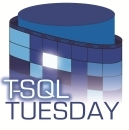Date 12/01/2015 5:58:48 AMTheir question was how their log could be full since their database is in SIMPLE recovery.
Log SQL Server (Current - 12/01/2015 1:00:00 PM)
Source spid118
Message Error: 9002, Severity: 17, State: 3.
--
Date 12/01/2015 5:58:48 AM
Log SQL Server (Current - 12/01/2015 1:00:00 PM)
Source spid118
Message The transaction log for database 'ABC' is full due to 'ACTIVE_BACKUP_OR_RESTORE'.
Their particular situation is that database ABC is a 650GB OLTP database, and the backup to the remote location was taking 7-8 hours each night over the time in question:
|
server_name
|
database_name
|
backup_start_date
|
backup_finish_date
|
physical_device_name
|
type
|
BackupSizeGB
|
|
Server1
|
ABC
|
12/4/2015 23:30
|
12/5/2015 7:11
|
VNBU0-29756-4248-1450758615
|
D
|
630
|
|
Server1
|
ABC
|
12/3/2015 0:00
|
12/3/2015 7:46
|
VNBU0-33644-31396-1450499421
|
D
|
630
|
|
Server1
|
ABC
|
12/1/2015 23:30
|
12/2/2015 6:22
|
VNBU0-30500-35052-1450413013
|
D
|
424
|
|
Server1
|
ABC
|
11/30/2015 23:30
|
12/1/2015 6:37
|
VNBU0-18236-33032-1450326613
|
D
|
468
|
|
Server1
|
ABC
|
10/30/2015 23:30
|
10/31/2015 4:51
|
VNBU0-5696-14276-1447734610
|
D
|
386
|
|
Server1
|
ABC
|
10/29/2015 0:05
|
10/29/2015 5:27
|
VNBU0-14976-21580-1447475427
|
D
|
378
|
|
Server1
|
ABC
|
10/27/2015 23:31
|
10/28/2015 4:59
|
VNBU0-18040-27960-1447389025
|
D
|
367
|
|
Server1
|
ABC
|
10/26/2015 23:31
|
10/27/2015 4:34
|
VNBU0-20180-26980-1447302625
|
D
|
356
|
|
Server1
|
ABC
|
10/25/2015 23:31
|
10/26/2015 5:00
|
VNBU0-22808-28180-1447216223
|
D
|
372
|
|
Server1
|
ABC
|
10/24/2015 23:31
|
10/25/2015 5:21
|
VNBU0-6160-15336-1447129821
|
D
|
372
|
|
Server1
|
ABC
|
10/23/2015 23:31
|
10/24/2015 5:01
|
VNBU0-5396-24044-1447043425
|
D
|
359
|
|
Server1
|
ABC
|
10/22/2015 23:31
|
10/23/2015 7:47
|
VNBU0-8796-18884-1446957027
|
D
|
375
|
|
Server1
|
ABC
|
10/21/2015 23:37
|
10/22/2015 5:29
|
VNBU0-18032-28004-1446870623
|
D
|
364
|
|
Server1
|
ABC
|
10/20/2015 23:31
|
10/21/2015 5:00
|
VNBU0-8692-19836-1446784216
|
D
|
371
|
The way FULL backups work in SQL Server, the transaction log is not released for re-use during a FULL backup, even if regular LOG backups are occurring or the database is in SIMPLE recovery. This is due to the fact that the portion of the LOG that is used during the FULL has to be persisted during the FULL in order to be backed up at the end of the FULL – that is, the FULL backup includes the data at the start of the FULL (23:30) *plus* the LOG used until the end of the FULL (in the case of the 12/04-12/05 backup, the LOG used from 23:30 to 07:11). This is the meaning of the ACTIVE_BACKUP_OR_RESTORE message – the LOG is waiting for the end of the active FULL backup before it can be released for re-use, which in this case was causing the LOG/LDF file to grow to fill its mount point.
What this means is that the LOG file has to be large enough (or be able to auto-grow large enough) to hold all of the work done during the FULL backup. In this system (like many others) there is maintenance done overnight (the largest on this system being a purge job which runs for 7-8 hours each night against database ABC almost exactly during this same time window). This maintenance was generating hundreds of GB of LOG each night during the FULL backup, resulting in the errors shown above.
For this client, the problem turned out to be that the NetBackup process performing these particular backups had been replaced by a snapshot style backup and disabled at the end of October but had recently been accidentally re-enabled. Shutting off this NetBackup schedule killed these backups, directly resolving the issue.
The alternative would be to have a sufficiently large LOG/LDF file to hold the work done during the FULL backup - even in SIMPLE recovery this is required. Another option would be to examine the nightly maintenance and schedule it to a different window, away from the FULL backup to minimize the amount of LOG/LDF that needs to persist during the FULL.
Many people don't consider this situation, and it doesn't come up frequently - usually only in this specific situation of a relatively large database that is also high traffic to fill the LOG during the FULL.
Hope this helps!
--




